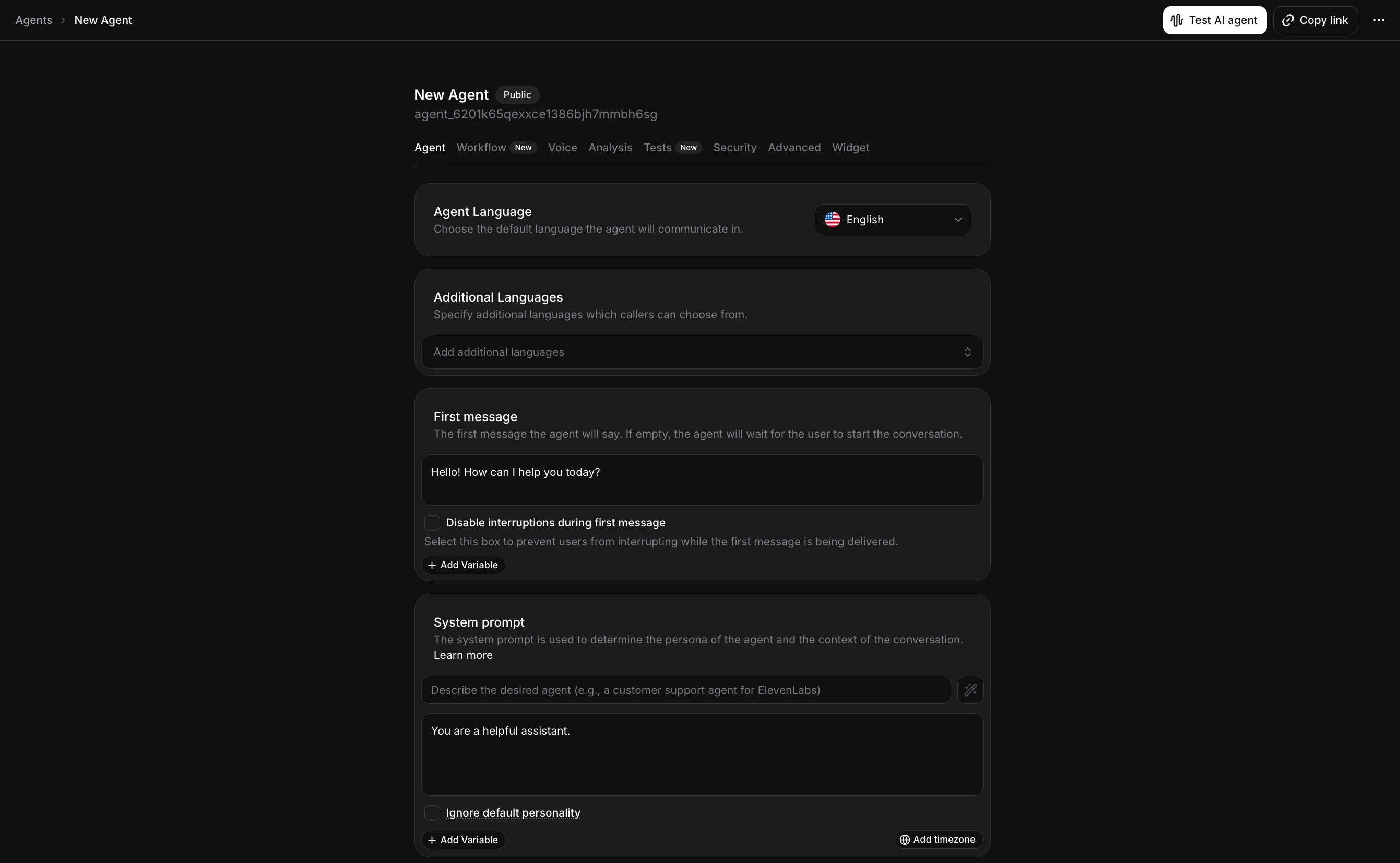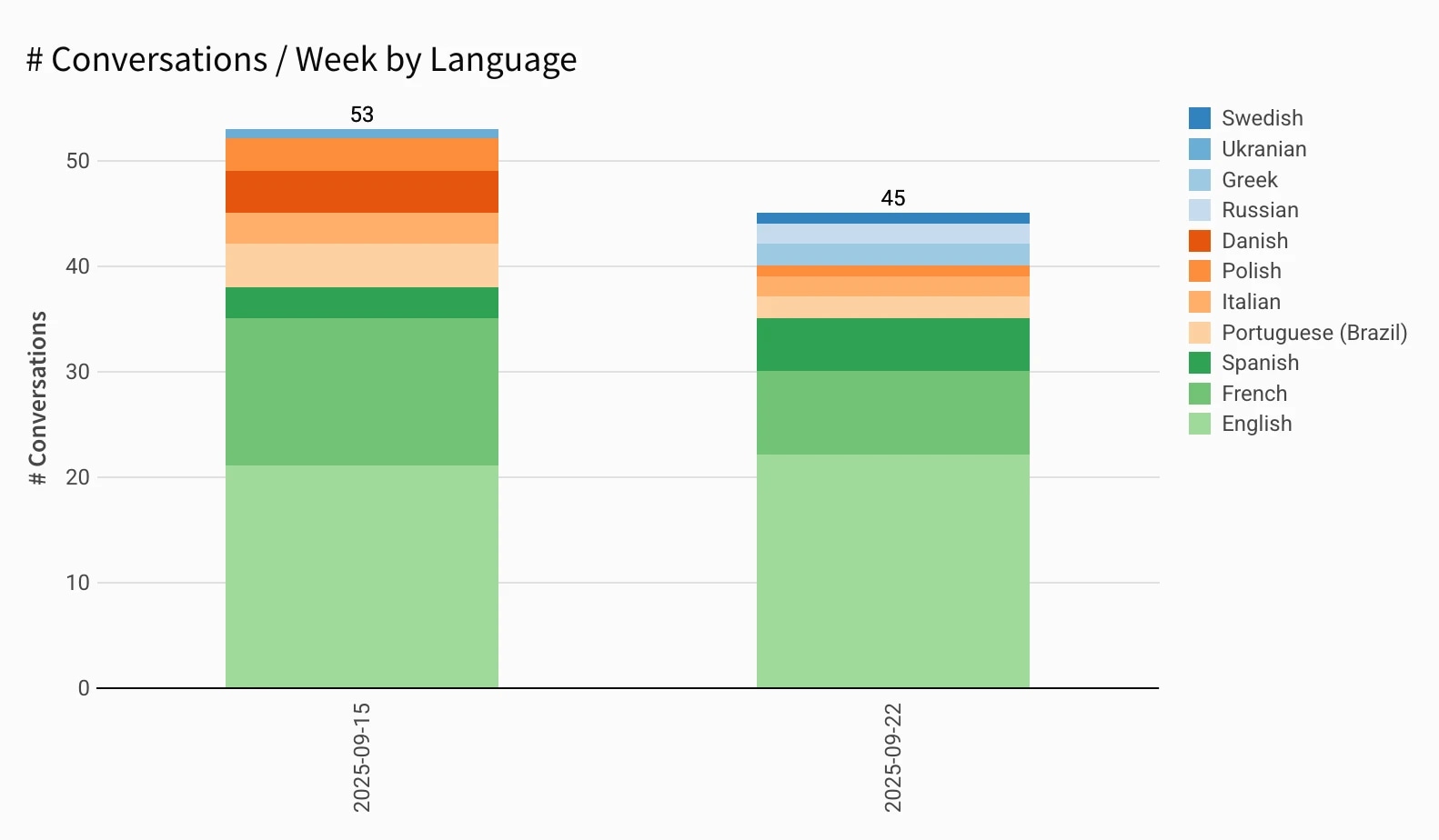.webp&w=3840&q=95)
Einführung von ElevenLabs Conversational AI 2.0
Conversational AI 2.0 startet mit erweiterten Funktionen und Unternehmensbereitschaft.
Rund um die Uhr in über 30 Sprachen verfügbar, kann der Agent sofort antworten und Meetings buchen
Jede Woche füllen Hunderte von Menschen das Unternehmensformular Vertriebsformular auf unserer Website aus, um mehr über unsere Plattform und Preise zu erfahren. Die meisten dieser Leads sind jedoch besser für unsere Self-Service-Pläne geeignet, die den Großteil unserer Nutzer bedienen und detaillierte Dokumentationen auf unserer Website bieten.
Obwohl unser Vertriebsteam gerne mit jedem Lead direkt sprechen würde, konzentrieren sie sich auf Unternehmensbereitstellungen, die maßgeschneiderte Lösungen erfordern. Stattdessen überprüfen sie jede Einsendung manuell, um zu entscheiden, welche für ein Unternehmensgespräch geeignet sind und welche besser zum Self-Service geleitet werden sollten. Viele Formulare enthalten jedoch unvollständige Details wie vage Beschreibungen des Anwendungsfalls des Leads, was unser Team dazu zwingt, für Kontext nachzufragen, bevor eine Entscheidung getroffen wird. Dieser Prozess kann die Reaktionszeiten verlangsamen und die Konzentration von wichtigeren Unternehmensmöglichkeiten ablenken.
Für unternehmensqualifizierte Leads bedeutet die Verzögerung bei der Überprüfung der Formulareinsendungen auch verlorenes Momentum. Idealerweise sollte ein Unternehmenslead in der Lage sein, ein Meeting zu buchen, sobald er das Kontaktformular einreicht. Andernfalls, wenn ein Formular am Freitagabend eingereicht wird, hört der Lead möglicherweise erst am Montag von unserem Vertriebsteam, was das erste Meeting auf später in der Woche verschiebt.
Um diese Lücke zwischen Nachfrage und Teamkapazität zu schließen, haben wir einen Inbound-KI-Vertriebsentwicklungsvertreter (SDR) mit unserer Agents Platform entwickelt. Der KI-SDR bietet schnellere, personalisierte Erlebnisse für eingehende Leads und ermöglicht unserem Team, sich auf die wirkungsvollsten Möglichkeiten zu konzentrieren.
Wir haben den Inbound-SDR um drei Säulen herum aufgebaut: Verhalten, Fähigkeiten und Daten.
Wir haben definiert, wie sich unser SDR „Jon“ verhält, indem wir den System-Prompt in unserer Agents Platform verwendet haben. Darin haben wir Jons Kernpersönlichkeitsmerkmale skizziert, wie zum Beispiel „ein warmer, beratender Vertriebsmitarbeiter, der komplexe KI-Themen zugänglich macht.“ Wir haben auch sein Hauptziel und die Szenarien definiert, in denen er handeln sollte, wie zum Beispiel ein Meeting zu buchen oder eine Nachricht an unser Team zu senden. Um mehr über die genaue Struktur zu erfahren, die wir befolgt haben, siehe unseren Prompting-Leitfaden.
Wir haben Jon mit einer umfangreichen Wissensbasis ausgestattet, die mehr als hundert häufig gestellte Fragen und einen Überblick über unsere Produktfähigkeiten aus unserer Website-Dokumentation umfasst. Derzeit aktualisieren wir Jons Wissensbasis manuell, wenn neue Produkte oder Funktionen veröffentlicht werden. Bald wird es möglich sein, eine Ziel-URL hinzuzufügen und die Wissensbasis regelmäßig automatisch zu aktualisieren.

Nach dem Start arbeiteten wir mit Vertriebsleitern in unserem GTM-Team zusammen, um Anrufprotokolle zu überprüfen, Fehler zu identifizieren und die Leistung des Agenten zu verbessern. Frühe Erkenntnisse umfassten:
Jon hat Zugriff auf die gleichen Tools, die ein menschlicher SDR verwenden würde, um eingehende Gespräche unabhängig zu verwalten.
Zu Beginn jedes Anrufs überprüft er die Einsendung des Kontaktformulars, um Kontext zu sammeln. Während des Anrufs kann er dann Leads qualifizieren und Meetings in Echtzeit buchen, indem er die Verfügbarkeit über Zeitzonen hinweg überprüft. Nachdem ein Meeting gebucht wurde, sendet er unserem Team eine Zusammenfassung des Anrufs.
Jon kann auch nahtlos zwischen 32 Sprachen wechseln, mit optimierten Stimmen für jede Region. In einer typischen Woche verwendet er mehr als acht Sprachen.

Am Ende jedes Anrufs erfasst Jon den Anwendungsfall des Leads und die Qualifikationsentscheidung und schreibt diese Daten direkt in unser CRM. Dies gibt unserem Team vollständige Transparenz über jede Vertriebsinteraktion.
Jon erfasst auch strukturierte Daten wie Kundenzufriedenheitsbewertungen. Am Ende eines Gesprächs bittet er die Leads, ihre Erfahrung auf einer Skala von 1-10 zu bewerten. Wir überprüfen täglich die am höchsten und am niedrigsten bewerteten Gespräche, um zu verstehen, was funktioniert hat und was nicht.
Diese Verhaltensweisen, Fähigkeiten und Datenpipelines sorgen dafür, dass Jon sowohl mit konversationaler Flüssigkeit als auch mit operativer Effizienz arbeitet und die gleichen Workflows wie ein menschlicher SDR bewältigt.
Seit dem Start wurde der KI-SDR in 38 Ländern mit 24/7-Verfügbarkeit eingesetzt. Er bearbeitet jetzt über 50 Anrufe pro Woche, was zwei Vollzeit-SDRs entspricht.

78 % seiner Qualifikationsentscheidungen erfordern keine menschliche Intervention. In den verbleibenden 22 % trifft der Agent meist „falsche positive“ Qualifikationen, bei denen er Leads qualifiziert, die hätten disqualifiziert werden sollen. Wir bevorzugen dieses Ergebnis gegenüber der Alternative, Leads zu disqualifizieren, die hätten qualifiziert werden sollen.
Diese falschen Positiven treten typischerweise auf, wenn Leads ihre erwartete Menge oder den Startzeitpunkt schätzen, aber nicht bestätigen können. Falsche Negative sind selten und treten normalerweise auf, wenn ein Lead den Anruf beendet, bevor der Agent genügend Informationen hat, um eine Entscheidung zu treffen. Zukünftig wird der Agent für unvollständige Fälle wie diese „N/A“ zurückgeben, anstatt den Lead zu disqualifizieren.
„Wir haben einen grundlegenden Wandel darin gesehen, wie Inbound-Vertrieb im großen Maßstab funktionieren kann. Mit unserem KI-SDR kann jeder, der an unserer Plattform interessiert ist, jetzt jederzeit ein personalisiertes Gespräch in seiner eigenen Sprache beginnen. Der beste Weg, unsere Plattform zu verstehen, ist, sie aus erster Hand zu erleben, und qualifizierte Leads buchen jetzt Meetings in Minuten statt Tagen.“ – Jonathan Chemouny, EMEA Sales Lead, ElevenLabs
Mit einem durchschnittlichen CSAT-Score von 8,7 zeigen frühe Gespräche, wie schnell sich die Wahrnehmung darüber ändert, was konversationelle Agenten erreichen können. Hier sind einige Auszüge:
In den nächsten Monaten werden wir die Fähigkeiten des Agenten durch unser neues Workflows-Feature erweitern. Workflows sind darauf ausgelegt, komplexere, dynamische Gespräche zu führen und eine zuverlässigere Entscheidungsfindung zu unterstützen. Dies wird auch neue Agenten-Anwendungsfälle wie Outbound-Vertrieb und die Wiederansprache von nicht reagierenden Leads ermöglichen.
Heute überprüft unser Team jede Entscheidung, die der KI-SDR trifft. Bald wird das System Meetings direkt in den Kalendern unserer Account Executives buchen, mit einer Planungslogik, die jedes Meeting automatisch dem richtigen Besitzer zuweist.
Unser KI-SDR hat unseren Inbound-Vertriebsprozess bereits umgestaltet, indem er die Erwartungen der Interessenten erfüllt und unserem Team mehr Zeit gibt, sich auf das Wesentliche zu konzentrieren. Wir sehen dies als einen weiteren Schritt in Richtung einer Zukunft, in der Sprache die primäre Schnittstelle für Technologie ist.
Möchten Sie Ihre eigenen konversationellen Agenten erstellen? Hier starten.
.webp&w=3840&q=95)
Conversational AI 2.0 startet mit erweiterten Funktionen und Unternehmensbereitschaft.

Erfolgreiche Lösung von >80% der Benutzeranfragen
Bereitgestellt von ElevenLabs Agenten